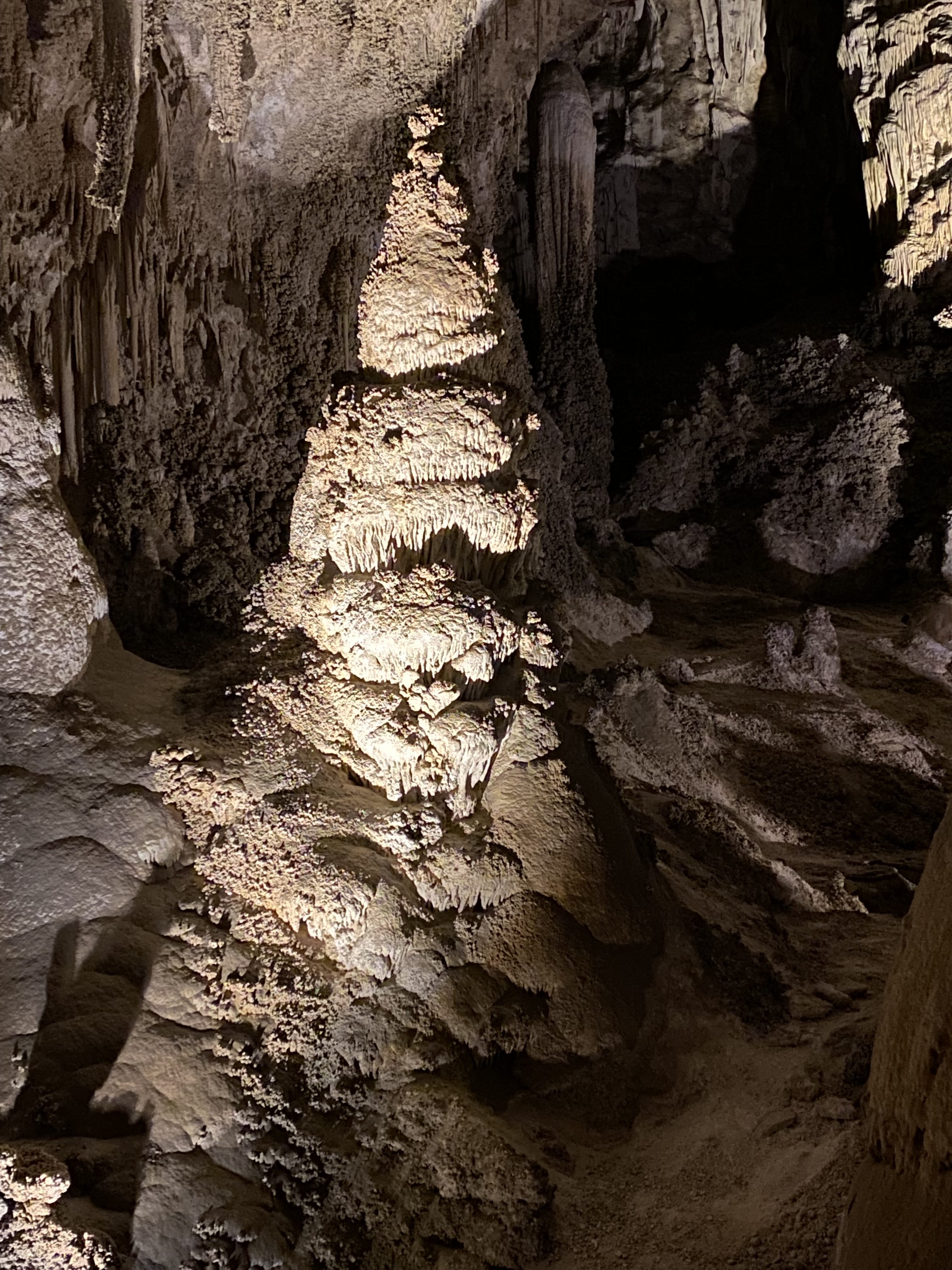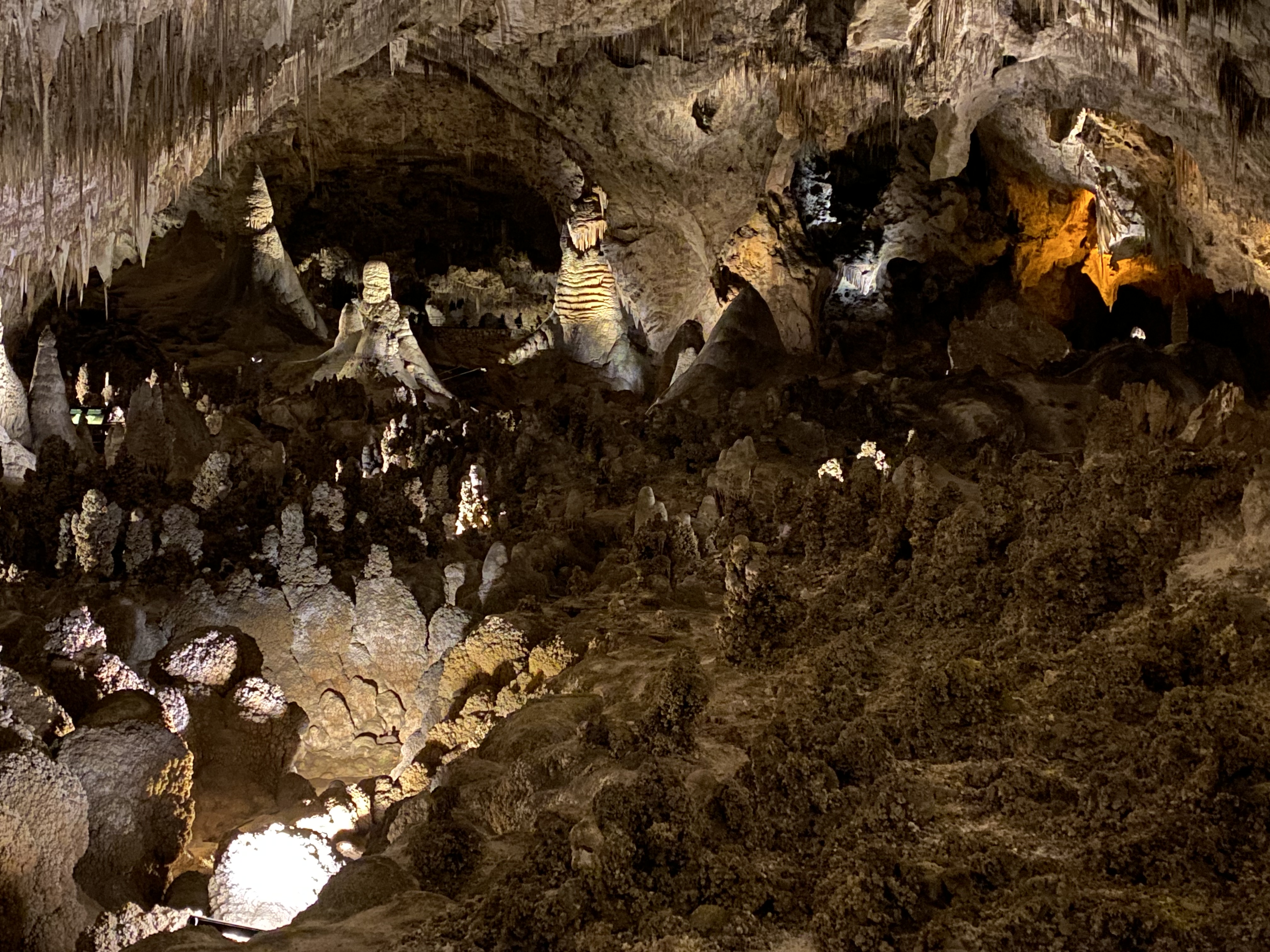Editor’s Note: This post is written by a member of LTV’s sponsored content team, The Leisure Explorers. Do you own a Leisure Travel Van and enjoy writing? Learn more about joining the team.
A Day in a Cavern, Windy Cold Weather, and a Change of Plans
We’re taking you along on our trip west last winter–leaving Michigan behind, heading south, then west, to Texas. We’ve skipped Mustang Island due to a harsh cold front, toured San Antonio and Fredericksburg, and are now heading northwest to Carlsbad Caverns in New Mexico, about a six-hour drive. From there, we plan to visit the White Sands National Park. We’ve been carefully watching the weather, paying attention to high winds and near-freezing temperatures, trying to avoid winterizing our 2015.5 Unity Murphy Bed “Lucky Us.” So far, so good. We disconnect the water from the RV nightly but typically find a little ice dripping from the water heater each morning.

Driving through the Texas Hill Country near Ozona.
I can’t say much about our trip from Fredericksburg to Carlsbad Caverns because there ain’t much to see once you leave the Texas Hill Country. Once we came to Fort Stockton and took a turn north, we passed a lot of dusty fields, followed by even more dusty fields. One town demanded a quick stop for obvious reasons.

When you are traveling with a man named Bill, ya better stop in Pecos, Texas, for a photo op. If you don’t know, Pecos Bill was a fictional cowboy and folk hero in stories written by Tex O’Reilly.
We made it to Carlsbad, New Mexico, just in time for dinner and found Rosy’s Mexican Restaurant. Its humble exterior paled in comparison to the authentic, tasty food served here.

If you are eating Mexican in New Mexico, you gotta start out with guacamole, chips, and, of course, Dos Equis.

Wanting to try something we had never heard of before, we chose discada, a delicious blend of ground beef, chorizo, and more, along with refried beans and Mexican rice.

We split this delicious dolce la leche dessert.
Next, we headed about a half-hour south to White’s City RV Park and Campground, close to our next day’s destination: Carlsbad Caverns. This RV Park is about what you’d expect in the desert, and it has a cute general store. BLM land is nearby, but we wanted to be close to the park and have electricity, and we were glad we did, with nighttime temperatures dropped near freezing.

White’s City RV Park and Campground
Carlsbad Caverns
Planning is essential to visit Carlsbad Caverns National Park in the Chihuahuan Desert, within the Guadalupe Mountains. First, a timed ticket must be purchased prior to entry, and they do sell out (don’t worry, they are just a buck each). We purchased our tickets weeks in advance to make sure we could get in. Second, assess your physical abilities prior to visiting. According to the park website, the Natural Entrance Trail is a steep 1-1/4 mile (2-kilometer) descent, equivalent to about 79 stories, from the Natural Entrance to the Big Room. Hiking time is about one hour to get to The Big Room. The park warns that this trail is not recommended for visitors with heart or respiratory conditions, and I’ll warn you if you have bad knees or hips that this descent might be challenging for you. Hiking poles are not allowed, and sturdy, closed-toe shoes are recommended. We took the natural entrance and were glad we did–there are lots to see before you enter The Big Room. If you are not up for the descent, take the elevator to the bottom of the Natural Entrance Trail, where you can enter The Big Room. Third, please pay attention to the warnings not to spread White Nose syndrome in bats, particularly if you will be visiting another cavern. A historic underground lunchroom and bathrooms are near the elevator and The Big Room.

It’s a 7-mile, winding trail from White’s City to the Visitor Center.
Once you’ve parked at the Visitor Center, choose your descent, either by foot or elevator, into the cave.

We chose to take the Natural Entrance.
According to the National Park Service website, hydrogen-sulfide-rich (H2S) waters began to migrate through fractures and faults in the Capitan limestone between four and six million years ago. This water, mixed with rainwater, formed sulfuric acid (H2SO4) and moved down from the surface. This acid dissolved the limestone along fractures and folded in the rock to form Carlsbad Cavern. This process left behind massive gypsum deposits, clay, and silt as evidence of how the cave was formed.

The formations you see, some sleek, some gnarled, may inspire you.

You might feel like you are on a journey to the center of the earth as you descend to The Big Room.

Stalactites and stalagmites can be seen throughout your self-guided tour.

The Big Room is the largest single-cave chamber by volume in North America. A 1.25-mile walking path takes you through this limestone chamber, with a shortcut if you don’t want to walk the entire path. National Park Services estimates about an hour and a half to explore. After our hike, we were ready to take the elevator back up to the top.
Taking a Different Direction
We had planned to head north to Artesia and spend the night there before taking the two-and-one-half-hour scenic drive to White Sands National Park, where we would spend the day and then camp nearby overnight. But freezing night temperatures and predicted 70-mile-per-hour winds changed our minds, and we had to scrap our plans. Frozen pipes and a sand-blasted exterior were not on our wish list. So, we changed direction, once again, heading south to a National Park. Watch for our next blog to see where we went. But for now, we’ll follow two other LTV owners, whom we met up top in the parking lot as we exited the park. Happy Travels!







Comments